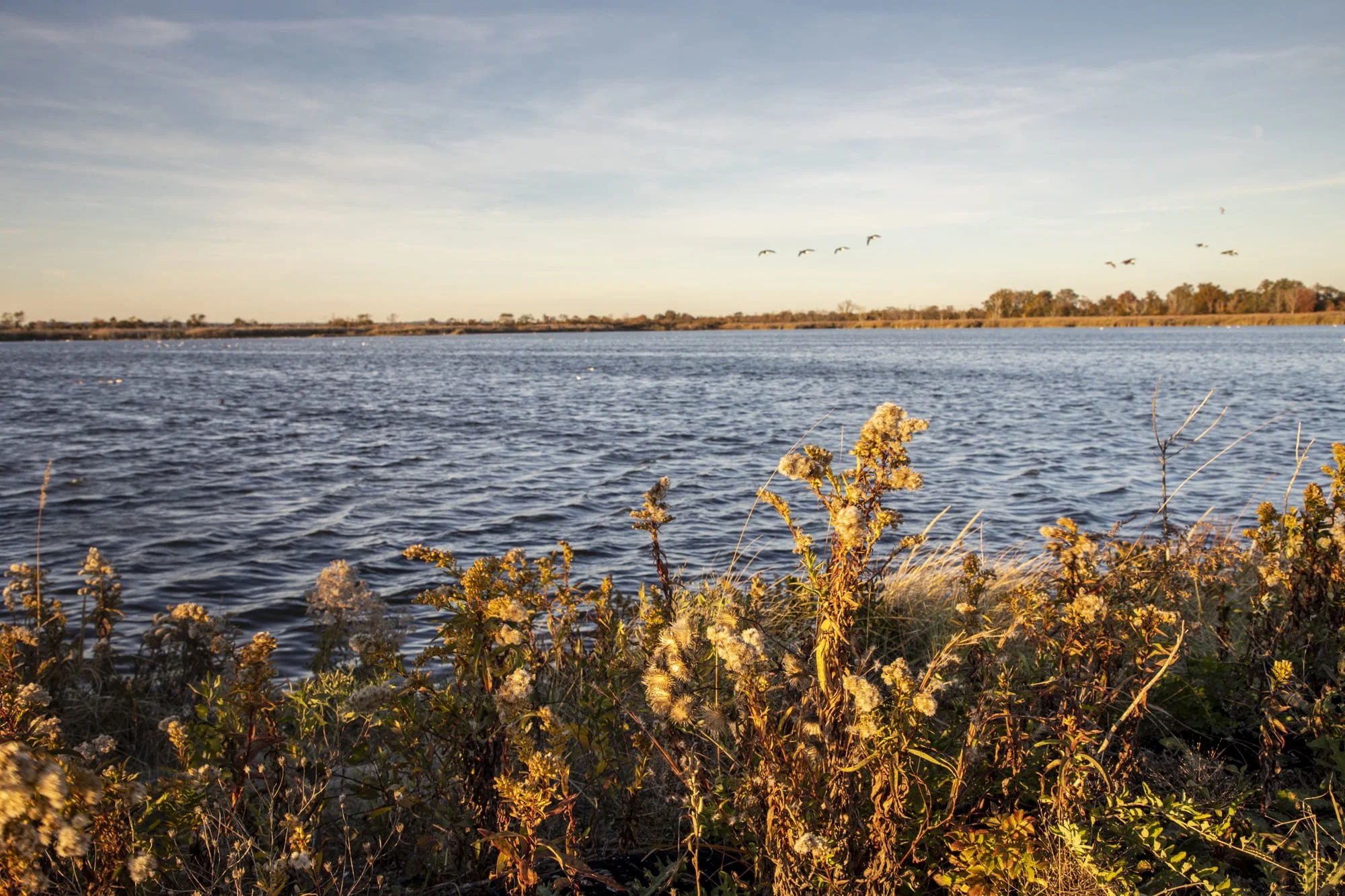West Pond Living Shoreline
West Pond shares in the challenges of Jamaica Bay – sediment starvation, marsh accretion outpaced by sea level rise, vegetation compromised by nutrient loading, and increasing storm severity. Constructed in 1953 by New York City Department of Parks to improve habitat diversity, West Pond became a beloved community asset and critical freshwater source for migratory birds along the Atlantic-Flyway. During Superstorm Sandy a narrow barrier was breached, mixing the pond’s fresh water with the bay’s saltwater. In response, the West Pond Living Shoreline project considered the complex interplay of a shifting estuarine ecosystem and the National Park Service’s programmatic and accessibility goals. It leverages Jamaica Bay’s dynamic natural systems to reestablish, protect and sustain West Pond’s critical marsh habitat.
A constellation of strategies – breakwater structures, additional sediment, marsh plantings, and erosion control – coalesce to attenuate wave action, improve water quality, and support the reemergence of mudflats and saltmarsh. This living framework supports pond edge restoration while adapting this vulnerable ecosystem to the challenges of climate change.
240,000 native plantings were installed in salt marsh and intertidal zones, creating a resilient ecotone between the high marsh and freshwater pond. On-going monitoring and data-driven research will sustain and inform this living shoreline design. This multi-discipline, community-based initiative, establishes an effective and vital response to our changing climate.
Typology
Jamaica Bay National Wildlife Refuge
Location
Queens, NY
Size
14 acres restored
9 acres of new habitat created
Client
National Park Service
Collaborators
Jamaica Bay - Rockaway Parks Conservancy
Rippled Waters
Great Ecology
Recognition
2022 ASLA Honor Award
2022 ALSANY Honor Award
2022 SARA NY Award of Excellence











